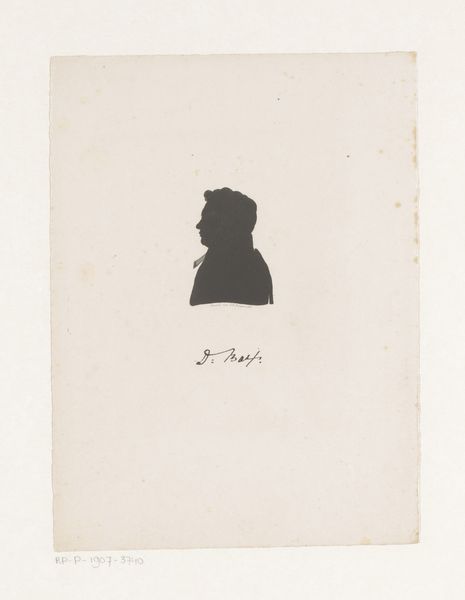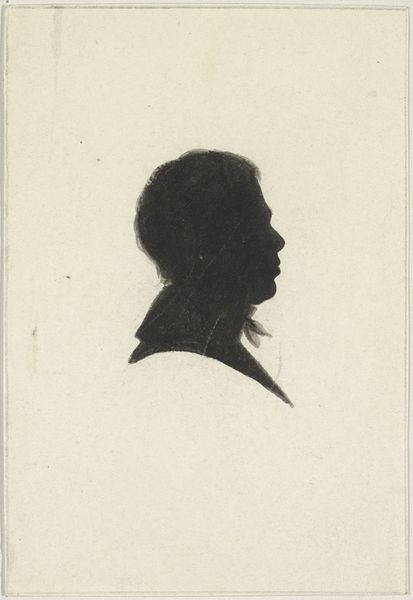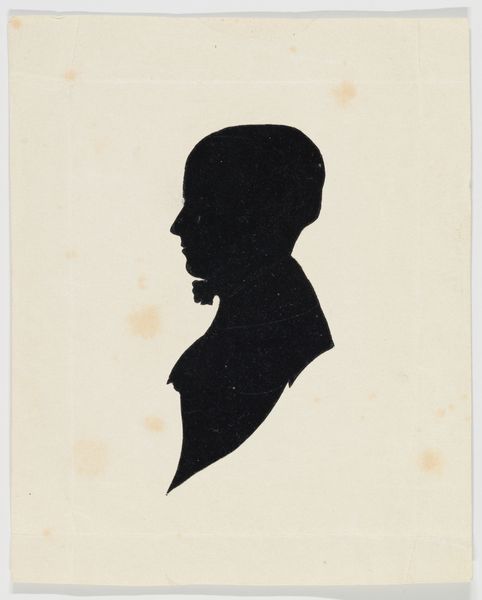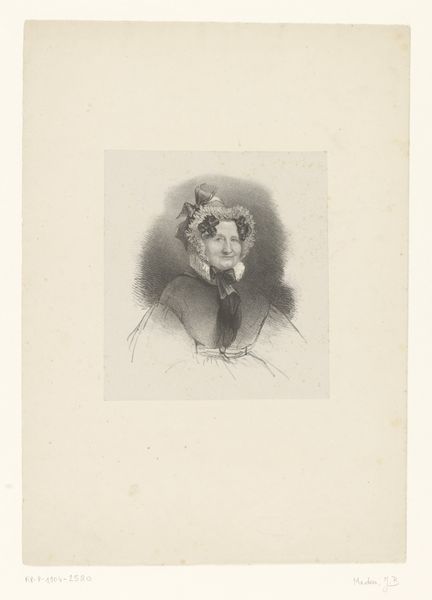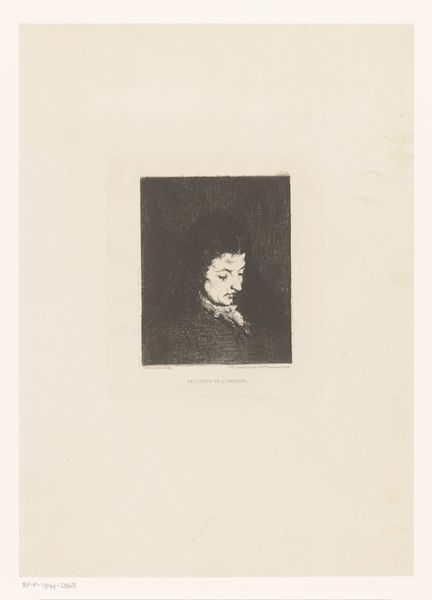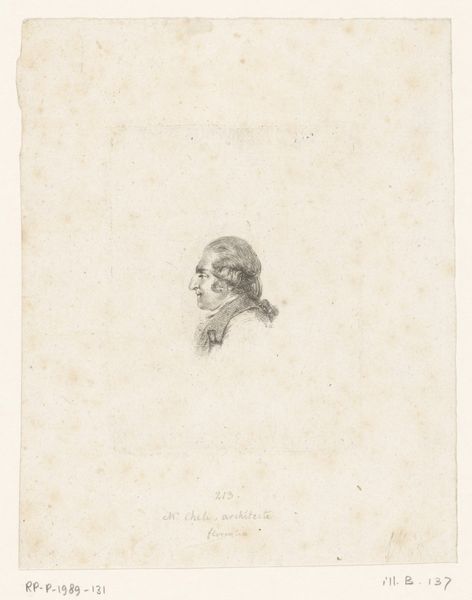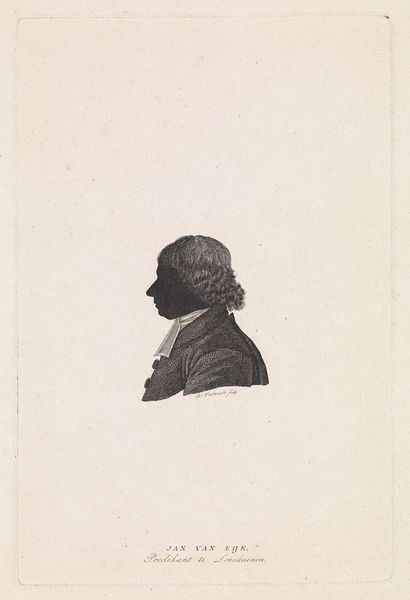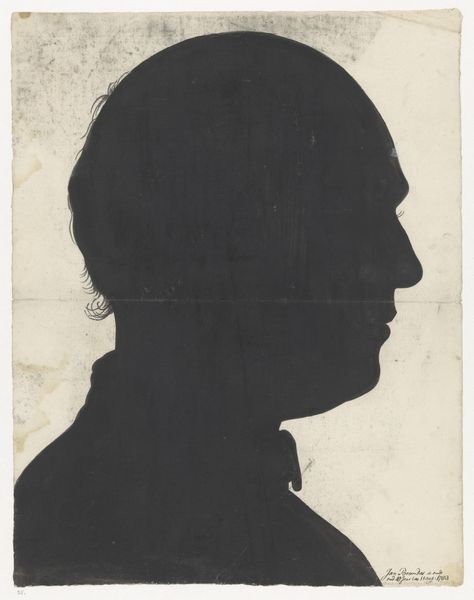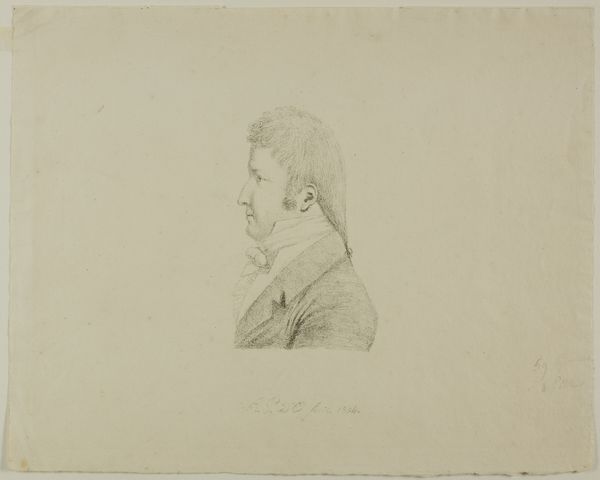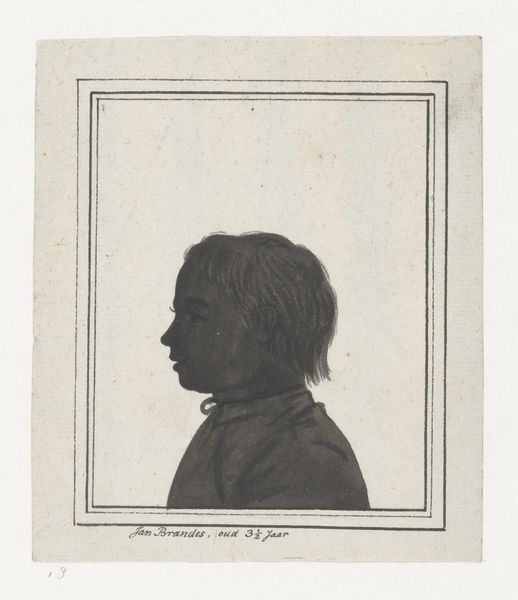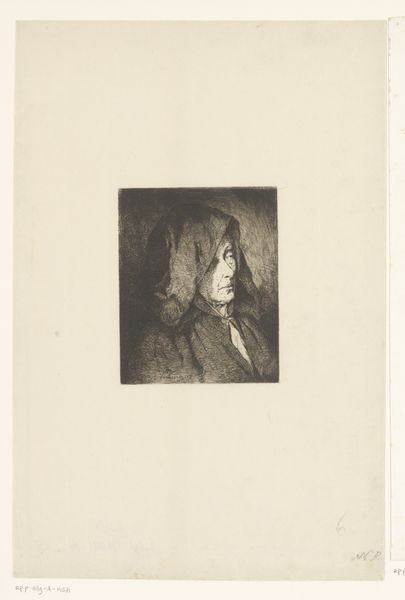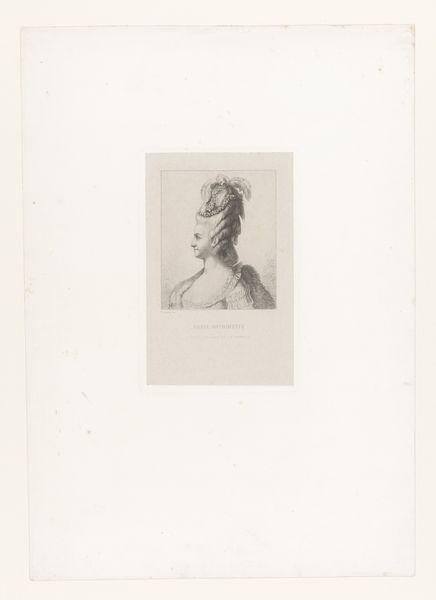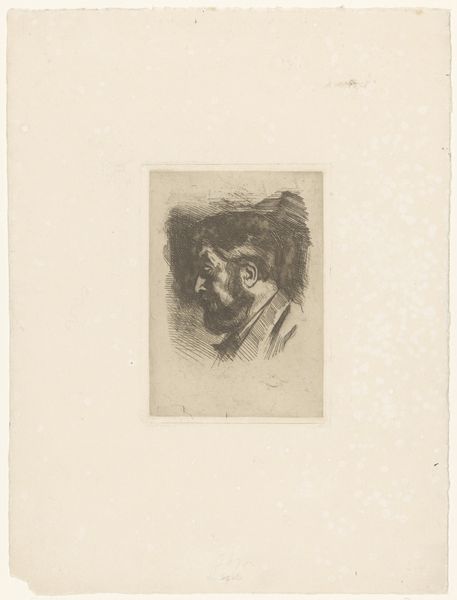
Silhouetportret van Alexander Karel Willem Suerman c. 1842 - 1880
0:00
0:00
Dimensions: height 225 mm, width 130 mm
Copyright: Rijks Museum: Open Domain
Editor: This silhouette portrait of Alexander Karel Willem Suerman, created sometime between 1842 and 1880 using pencil, has a certain austere quality to it. The crisp outline and lack of detail evoke a sense of formality, even detachment. What strikes you most when you look at this piece? Curator: It’s fascinating how silhouette portraits like this gained popularity. Think about it: in a pre-photographic era, this offered a relatively affordable way for the rising middle class to participate in image culture. Do you see how this simple likeness could offer access to status, a sense of belonging, and a claim to posterity? Editor: I see your point. It's interesting how the simplicity of the medium democratized portraiture, at least to some degree. So, it's less about artistic skill in this instance and more about its social function? Curator: Precisely. While artistic skill is certainly involved in capturing the likeness and conveying the subject’s perceived status, the proliferation of such images tells us much about social mobility and aspiration during the period. The silhouette, in a sense, becomes a social marker. Where do you think these were hung and kept, what message would they give? Editor: Hmm. Maybe kept in albums and shown during visits from other members of that social circle. I hadn't considered how something so simple could reflect such broader societal shifts. Curator: Art often serves as a mirror to its time, reflecting both the individual and collective ambitions of the society that produced it. Next time you visit the exhibition have a think about which works speak of more than themselves alone! Editor: Absolutely. It really gives a different perspective. Thanks for sharing that insight!
Comments
No comments
Be the first to comment and join the conversation on the ultimate creative platform.
